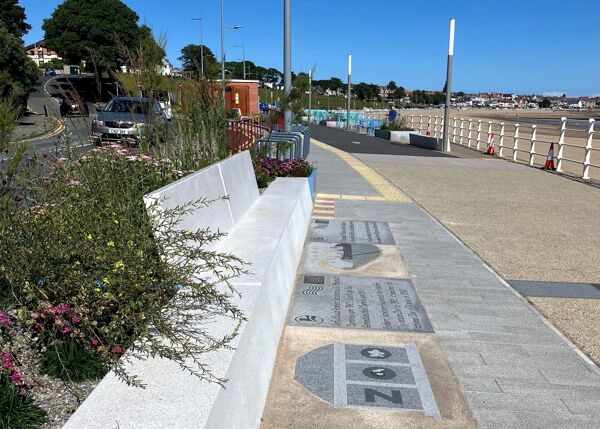
Road P2 of the Tseung Kwan O–Lam Tin Tunnel project in Hong Kong is a vital link in the 11.9 km long Route 6 planned between west Kowloon and the Tseung Kwan O development area to the east.
Due for completion in 2021, the NEC-procured HK$1777 million (£180 million) project involves reclaiming 3 ha of land in Junk Bay and constructing an 800 m stretch of dual two-lane highway, of which 200 m will be covered with a landscaped deck.
Road P2 will link the centre of Tseung Kwan O new town with the east end of the HK$8731 million (£900 million) main tunnel section of the same project, which is delivering 3.4 km of dual carriageway between the planned Trunk Road T2 of Route 6 to the west and planned Cross Bay Link to the east.
Together with the planned Central Kowloon Route further to the west, the new roads will form the Route 6 east–west highway, providing much-needed relief to the 1990 Tseung Kwan O Tunnel on Route 7 to the north.
The Civil Engineering and Development Department of the Hong Kong government awarded an NEC3 Engineering and Construction Contract (ECC) Option C (target contract with activity schedule) for the Road P2 section to a joint venture of China Road and Bridge Corporation and Build King in July 2016.
The contract includes construction of associated roads, cycle tracks, footpaths, retaining walls, drainage and plant rooms as well as landscaping and environmental protection and mitigation works.
Clarity, simplicty and flexibility
According to the employer’s in-house NEC project manager Eric Chiang, ‘NEC was chosen for its clarity, simplicity and flexibility for construction project management. Its use of plain English and avoidance of subjective terminology provides a better understanding and more certainty in interpretation.‘The selection of ECC Option C for this contract enables a fair risk allocation between the parties and provides a good incentive for the contractor to minimise the cost of the works and to achieve better cost and programme control.
‘The NEC mechanisms for early warnings and risk reduction meetings encourage all parties to take the necessary actions at the earliest opportunity to address potential problems. The discussions in risk reduction meetings enable effective mitigation measures to be developed and implemented in a timely manner to minimise the impact of risks.’
Particular risks on the contract include diversion of uncharted utilities, flooding during heavy rain, unforeseen geological conditions and dredging exceeding the amount assumed in the environmental impact assessment.
Training and consultancy
An NEC advisor was engaged at the outset of the project to assist the in-house project manager, the supervisor and the contractor’s management and staff become familiar with ECC Option C. This included delivering a series of training workshops.The initial partnering and collaborative workshops focused on developing cooperative working skills, attitudes and behaviours among the project team. The workshops helped the contracting parties to understand the NEC’s ‘spirit of mutual trust and cooperation’ and collaborative working, as well as promoting teamwork, dispute avoidance and efficiency in delivering the works.
Practical workshops were held to enhance the parties’ understanding of implementing ECC Option C and to address contract-specific roles and responsibilities. In particular they elaborated how to set up protocols for communications, early warnings, risk registers, programmes, defects, payments, audit processes and compensation events.
Finally a cost-auditing workshop facilitated the parties to understand the contractual and practical requirements of ECC Option C and to develop and implement audit procedures and protocols. It also explained how the open-book approach works in practice and the necessary auditing procedures, as well as activity schedules, prices for work done to date, defined costs, disallowed costs and fees as defined by NEC.
Proactive project management
During the first three months of the Road P2 project, ten NEC early warnings were raised and three risk reduction meetings were held to discuss the best way to deal with potential risks.The project manager, supervisor and contractor worked in a proactive and collaborative manner to achieve the following in the first 3 months of project
- Acceptance of contractor’s first programme within 7 weeks
- Acceptance of the sub-contracting procedure within a month, facilitating early engagement of subcontractors to kick-start the site works
- Agreement on the format of site records for proper recording of defined costs for more efficient assessment of payments
- Establishment of working meetings to deal with early warning matters and development of mitigation measures via regular risk reduction meetings
- Standardisation of payment application and assessment procedures
Benefits of using NEC
- NEC contracts are clear, flexible and easy to use.
- NEC stimulates the development of a spirit of mutual trust and cooperation among contracting parties.
- The NEC early warning mechanism facilitates the reduction of potential risks.
- NEC enables better risk allocation and risk sharing than traditional contracts.




